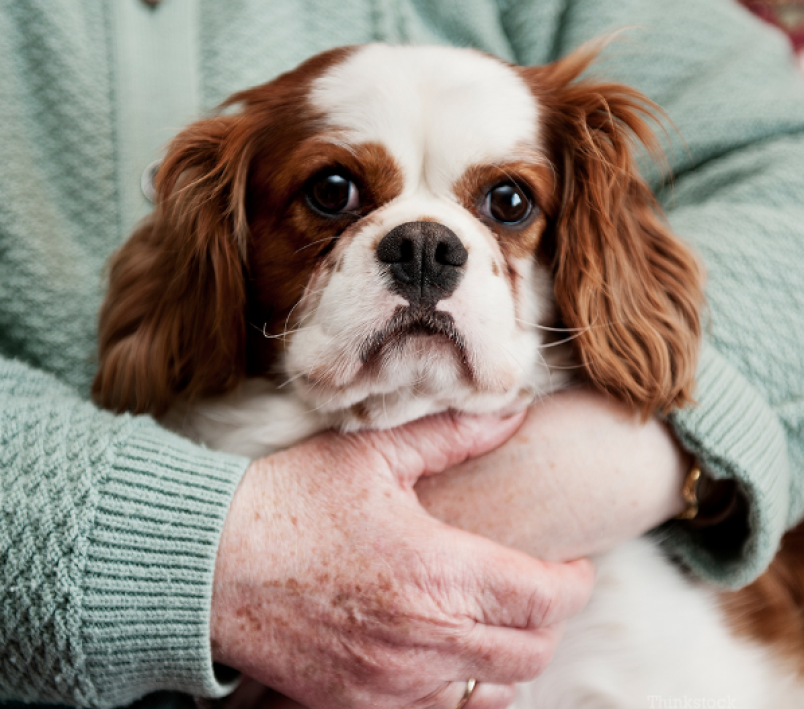When pets age, diligent owners will often notice changes with their skin, especially when demanding furry friends want those beloved doggy massages! The most common complaint in our geriatric health exams is: my “pet has a new lump,” or “this old lump has grown.” These lumps/masses can be anything from an inflammatory cyst, to an invasive, aggressive cancer. The appropriate diagnostic steps at your pet’s yearly exam can aid in distinguishing these pesky lumps! Let’s take a moment to describe and reveal the facts about a particular lump most dog owners have heard of—lipomas.
Lipomas are masses, or tumors, which consist of adipose tissue (a collection of fat cells), which decide to grow more than they should. They are often a soft, round and attached (but moveable) bump just under the skin. This abnormal growth of tissue can occur anywhere on your furry friend and is one of the more common benign masses found! As most tumors do, lipomas start out very small, sometimes undergoing unnoticeable growth, and only obvious when they become huge lumps. These fat deposits can actually grow, and grow in multiple different places on one pet.
Often, these tumors are seen in middle-aged to older, and/or overweight dogs (the occasional older cats can have them too). The cause of a lipoma has not been discovered, but grow slowly, so they usually stay in their place of origin and are unlikely to spread. Fortunately, lipomas do not cause pain, hair loss or infection, and go unnoticed by the animal.
To diagnose a mass, you will have to visit your local veterinarian (although how cool would it be to know exactly the cells of a mass by feeling it)! They will perform a simple procedure called a fine needle aspirate (FNA). This entails collecting cells with a tiny needle poke of the lump and then view those cells under a microscope (cytology); a small percentage of lumps could end up in the malignant category (or more aggressive tumors) so viewing these cells is necessary to determine the lumps tissue of origin! This procedure can be done right in the exam room, and is relatively pain free for your pet.
Once a diagnosis is made, the veterinarian will decide the best course of action: either a ‘wait-and-watch’ approach, remove surgically, or a biopsy, if a FNA is inconclusive. If the lipoma prevents your pet’s movement or is bothersome to your pet, surgery could be a possibility. For example, a tumor under the front leg in the armpit region could grow so big, it could make it hard for a dog to get around, and cause discomfort. Overall, lipomas will rarely cause issues unless they become exceptionally big or their location creates mechanical problems for your dog. Even though they may develop rapidly, in most cases their growth is slow and keeping a diligent eye on how the mass changes overtime.
If surgery is recommended, your veterinarian might perform a presurgical blood test to assure your dog is healthy and a satisfactory anesthetic candidate! Excision can be curative, but in some cases, other lipomas may pop up and continue to grow in different areas on your pet!
On very rare occurrences, a lipoma may grow very rapidly and even spread to surrounding tissues—underlying connective tissue, invading muscle, tendons, and nerves. These are rare and would be either classified as infiltrative lipomas or possibly a malignant, or mildly aggressive, fatty tumor (liposarcoma). The chest and legs of dogs are the usual sites where these tend to develop. Surgical removal is often recommended, with excision of a margin of normal tissue surrounding the mass too.
Overall, lipomas can occur at any age and in any breed making them unpredictable and hard to prevent. However, there is a high rate of occurrence in overweight animals. Keeping your pet at an ideal body condition, including a suitable weight, combined with daily exercise, could decrease the likelihood of a lipoma to develop and maintain their health to help them feel better and be more active as they age!
If you find a lump on your dog, get it examined by a veterinarian to create a plan of action! Several diagnostic steps are involved in the proper work-up of a newly discovered lump. Do not just dismiss growths or bumps in the skin, some serious cancerous masses can be disguised as a simple lump, and a veterinarian will help to distinguish between them. Early detection can be lifesaving, so if your pet has a lump you are worried about it, give us a call at the DCVC.



